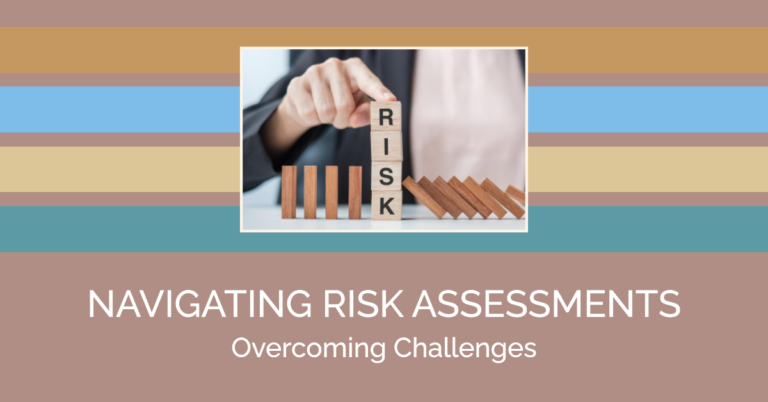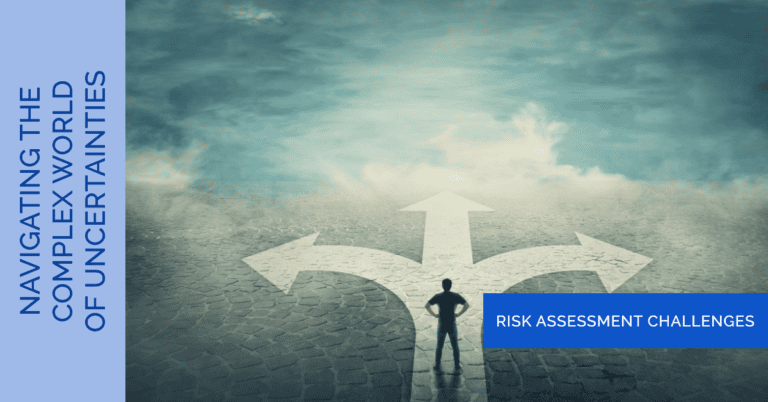Risk management identifies, assesses, and manages business risk (threats and opportunities). These risks stem from various sources, including financial uncertainties, legal liabilities, technology issues, strategic management errors, accidents, and natural disasters.
A successful risk management program helps a business consider the full range of risks. Risk management also examines the relationship between risks and the cascading impact on a company’s strategic goals.
What is a risk assessment?
A risk assessment identifies risks that could impact a business’s ability to conduct business. This risk assessment process helps identify the inherent business risks and provides processes and any risk control measures to reduce the impact of risk on business operations.
Risk analysis
Risk analysis identifies and analyses potential issues that could negatively impact key business initiatives or projects. This process helps businesses avoid, accept, reduce or transfer risk.
Risk identification
Risk identification determines risks that could prevent the business from achieving its objectives and sets out to identify its exposure to uncertainty. This requires knowledge of:
- the organisation
- the market in which the company operates and
- the legal, social, political and environmental situation in which the business exists
Risk identification requires a solid understanding of the company’s strategic and operational goals, the factors contributing to its success, and potential threats or opportunities.
When approaching risk identification, there must be a systematic approach to ensure that all significant activities and risks within the company have been identified. All risks should then be categorised. There are many ways that businesses and business activities can be risk classified. Here are a few examples:
- Cost: This risk is when the cost forecasts or exceeds the budget. Cost risk may lead to performance risk if cost overruns lead to reductions in scope or quality in an attempt to stay within budget
- Schedule: Schedule risk is the likelihood of failing to meet schedule plans and the effect of that failure on the business
- Financial: These are concerned with the management of an organisation’s finances and how external factors affect it, such as standard financial practices like cash flow, managing credit, addressing exchange rates, interest rates and other market exposures
- Health and Safety: A health and safety risk relates to workplace risks and the assessment of potential hazard, or hazards, by the employer that can lead to the harm, injury, death, or illness of staff employees, third-party workers, other stakeholders or the general public. It can also assess working practices or work regulations where non-compliance exposes a risk. For example, in an occupational health context, no method statement is available for a manual handling work activity
- Environmental: Environmental risks to health include pollution, radiation, noise, land use patterns, work environment, and climate change. These risks, if threats, can have a significant negative impact on a business’s reputation
- Security: Is a risk that could damage the business by giving information to a competitor, or an unattended package left could be deemed a security risk or a cyber attack
- Strategic: These concern the long-term strategic objectives of the organisation. They can be affected by capital availability, sovereign and political risks, legal and regulatory changes, reputation and changes in the physical environment
- Operational: These concern the day-to-day issues that the organisation is confronted with as it strives to deliver its strategic objectives
Under certain conditions, third-party risk identification by specialists providing professional services can be effective. However, there are benefits to in-house ownership of the risk management process and tools for effectively identifying risks.

Risk description
The critical requirement for a risk description is that it identifies the significant risk event, the consequences on program objectives, and the cause (if known). Disciplined use of structured formats can help in describing a risk, produce more effective risk statements, and avoid weak statements that lead to confusion
The objective of the risk description is to display the identified risks in a structured format, such as a risk register.
A well-designed structure is necessary to ensure a comprehensive risk identification, description, and assessment procedure.
An excellent risk management process should be structured so that comprehensive risk identification, description of the risks, and assessment of them to estimate their probability and consequences take place. Once this is done, it should be possible to identify the key risks and analyse them in more detail. The risk description can facilitate the description and assessment of risks.
Identifying the risks associated with business activities and decision-making may be categorised as strategic, tactical, or operational. Risk management must also be incorporated into project or change management at the conceptual stage and throughout the life of a specific project or change.
Risk estimation
Risk estimation, or characterisation, is the final step in risk assessment. Its goal is to produce measures of the risks being assessed. This involves defining the possibility of adverse consequences and the consequence (impact) of the risk. Ideally, the output of a risk assessment includes explicit definitions of both the magnitudes of possible implications and the likelihood involved.
When estimating the risk rating, you can use qualitative or quantitative approaches.
For example, consequence threats (downside risks) and opportunities (upside risks) may be high, medium or low. Likelihood (probability) may also be high, medium or low but require different definitions regarding threats and opportunities of risks.
For example, many organisations find that assessing high-risk, medium-risk or low-risk is adequate for their needs and can be presented as a 3×3 risk matrix. Other companies find that assessing consequences and probability using a 5×5 risk matrix better evaluates risk.
Risk evaluation
Risk evaluation determines risk management priorities by establishing qualitative and/or quantitative relationships between benefits and associated risks.
Anyone responsible for a company’s operations must perform a risk evaluation.
A risk evaluation can help determine if a business is at risk from a cyberattack, natural disaster, or other threat.
Or if opportunities can be realised, such as improving productivity, increasing revenue, or creating a safer working environment.
A risk evaluation benefits the company by informing it where and how its business and reputation are at risk.
Final Thoughts

Risk assessment is a systematic process used to identify and analyse potential risk events that could positively or negatively impact a business’s ability to conduct business. The assessment should be provided as a written risk assessment, perhaps as a risk assessment form, or as provided in GetRiskManager within a software system.
Risk analysis starts by identifying potential risks that could impact critical business goals. This process is done to help businesses avoid, accept, reduce or transfer those risks. Risk description clearly describes a risk event, the consequences on program objectives, and the cause. Risk estimation, also known as risk characterisation, is the final step in risk analysis. Its goal is to measure the risks being assessed.
Risk evaluation determines risk management priorities by establishing qualitative and/or quantitative relationships between benefits and associated remaining risks.


